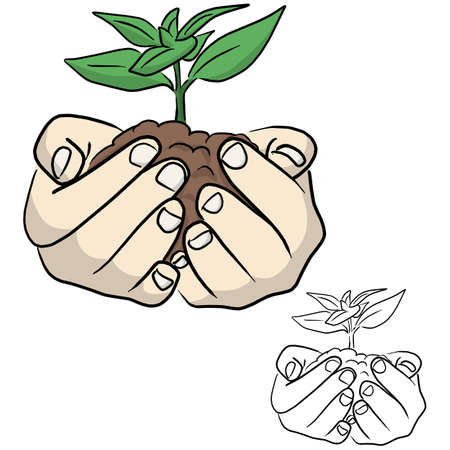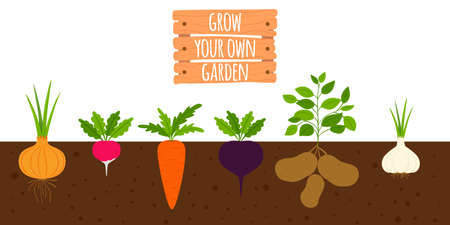1. Why Soil Testing Matters
If youre dreaming of a lush lawn, vibrant flower beds, or a bountiful vegetable garden, it all starts with one thing: healthy soil. Many homeowners overlook soil testing, but its one of the most important steps in successful backyard gardening.
Why Test Your Soil?
Soil testing gives you a snapshot of your soil’s current condition. It tells you what nutrients are available, what’s missing, and whether the pH level is right for the plants you want to grow. Without this info, you’re basically guessing—and that can lead to poor plant growth, wasted money on fertilizers, and lots of frustration.
Benefits of Knowing Your Soil
Understanding your soil helps you:
- Grow Healthier Plants: When plants get the nutrients they need, they grow stronger and resist pests and diseases better.
- Save Money: You’ll only add the fertilizers and amendments your soil actually needs—no more buying random products that don’t work.
- Improve Lawn Care: A well-balanced soil encourages deep root growth and a thicker, greener lawn.
- Boost Garden Productivity: Vegetables and fruits thrive when grown in nutrient-rich, properly balanced soil.
Soil Conditions at a Glance
| Soil Feature | Why It Matters | What to Look For |
|---|---|---|
| Nutrient Levels (N-P-K) | Essential for plant growth and development | Low levels may cause stunted growth or yellowing leaves |
| pH Level | Affects how plants absorb nutrients | Most plants prefer a pH between 6.0 and 7.0 |
| Organic Matter | Improves soil structure and moisture retention | Darker soil often indicates higher organic content |
| Texture (sand/silt/clay) | Affects drainage and root development | Sandy soils drain quickly; clay holds water longer |
The Bottom Line
Your backyard might look like any other patch of grass or dirt—but beneath the surface is a complex mix of elements that can either help or hurt your gardening goals. Soil testing is your first step toward understanding what’s going on underground so you can treat your yard like a pro.
2. Tools and Supplies You’ll Need
Before you jump into testing your backyard soil, youll need to gather a few tools and supplies. Whether youre going the DIY route or planning to send samples to a professional lab, having the right gear on hand will make the process smoother and more accurate. Heres a breakdown of what you might need, depending on how in-depth you want to go with your soil analysis.
Basic DIY Soil Test Kits
These are perfect for home gardeners who want quick insights into their soils pH level and nutrient content. You can find these kits at most garden centers or online retailers like Amazon or Home Depot. They usually come with easy-to-follow instructions and color-coded results.
| Item | Purpose | Where to Find It |
|---|---|---|
| DIY Soil Test Kit | Tests pH, nitrogen (N), phosphorus (P), and potassium (K) | Garden stores, online |
| Plastic scoop or trowel | Collect soil samples without contamination | Your gardening tool kit |
| Clean container or zip-top bag | Hold soil samples for testing | Kitchen drawer or grocery store |
| Distilled water | Avoids interference from minerals in tap water during tests | Pharmacy, grocery store |
Intermediate Tools for More Accurate Results
If youre looking for more detailed data, consider stepping up your game with these tools:
- Digital pH Meter: Provides a more precise reading than color strips; make sure its calibrated regularly.
- Soil Thermometer: Useful if youre planting seasonal crops that require specific soil temps.
- TDS/EC Meter: Measures Total Dissolved Solids and Electrical Conductivity, indicating salinity levels.
Professional Lab Testing Supplies
If you want the most thorough analysis—ideal for diagnosing long-term problems or prepping a new garden bed—you can send your soil to a certified lab. Many university extension offices across the U.S. offer this service. Here’s what you’ll need:
| Item | Description |
|---|---|
| Soil Sample Submission Form | Provided by the lab; includes info about your sample and testing goals |
| Labeled Sample Bag | A clean, sealable bag labeled with location details (e.g., “Vegetable Garden – Front Yard”) |
| DIGGING TOOL (Spade or Auger) | Makes it easier to collect uniform samples from multiple spots in your yard |
Pro Tip:
If youre sending soil to a lab, avoid using metal containers as they can alter mineral readings. Stick to plastic or paper bags recommended by the lab.
Coming Up Next:
Now that you’ve got your tools ready, it’s time to collect your soil samples properly. We’ll walk you through that step-by-step in the next section.

3. Collecting Soil Samples the Right Way
Getting accurate results from your soil test starts with collecting a good sample. Whether youre growing juicy tomatoes or vibrant perennials, taking the time to gather soil properly makes all the difference. Follow these simple steps to collect a soil sample like a pro.
Step 1: Gather Your Tools
You dont need fancy equipment—just a few basic tools will do:
| Tool | Purpose |
|---|---|
| Garden trowel or soil probe | To dig and extract soil samples |
| Clean plastic bucket | To mix multiple samples together |
| Ziploc bag or soil test bag | To send your final mixed sample to the lab |
Step 2: Choose Your Sampling Areas
If you have different areas in your backyard—like a vegetable garden, flower beds, or lawn—sample them separately. Each area may have different nutrient levels and pH balances.
Tip:
If an area is bigger than 100 square feet, take more samples to ensure accuracy.
Step 3: Take Soil Cores
In each distinct area, collect 5 to 10 subsamples. Here’s how:
- Select random spots within the area.
- Use your trowel or probe to dig down about 6 inches (for lawns, go only 3–4 inches).
- Scoop out a thin slice of soil and place it in the bucket.
Step 4: Mix and Prepare Your Sample
Once youve collected all your subsamples for one area:
- Mash and mix them thoroughly in the bucket to create a uniform blend.
- Scoop out about 1 pint of this mixed soil and place it in your labeled bag.
Step 5: Label Properly
If youre testing multiple areas, label each bag clearly with the location (e.g., “Front Flower Bed” or “Back Veggie Patch”). This helps when interpreting test results later on.
Your sample is now ready to be sent off for analysis—or used for DIY testing at home!
4. Interpreting Your Soil Test Results
Once you’ve received your soil test results, it’s time to understand what all those numbers and terms really mean for your garden. Dont worry—it’s not as complicated as it looks! Here’s a simple guide to help you break down the key parts of your report.
Understanding pH Levels
The pH level tells you how acidic or alkaline your soil is. Most plants prefer a slightly acidic to neutral pH (6.0–7.0). If your soil is outside this range, some nutrients may not be available to your plants—even if they’re present in the soil.
| pH Level | Soil Condition | What It Means |
|---|---|---|
| Below 5.5 | Very Acidic | Add lime to raise pH for most garden plants. |
| 5.5 – 6.0 | Moderately Acidic | Good for acid-loving plants like blueberries. |
| 6.0 – 7.0 | Neutral to Slightly Acidic | Ideal for most vegetables and flowers. |
| Above 7.0 | Alkaline | Add sulfur or organic matter to lower pH if needed. |
Nutrient Levels: N-P-K and More
Your soil test will likely show levels of the primary nutrients nitrogen (N), phosphorus (P), and potassium (K), along with secondary nutrients like calcium, magnesium, and sulfur, plus micronutrients such as iron and zinc. Each plays a different role in plant health.
| Nutrient | Function in Plants | What Low Levels Mean |
|---|---|---|
| Nitrogen (N) | Leaf and stem growth | Pale leaves, slow growth |
| Phosphorus (P) | Root development, flowering | Poor root growth, fewer flowers/fruits |
| Potassium (K) | Disease resistance, overall vigor | Weak stems, poor fruit quality |
Soil Texture and Composition
This part of the report shows whether your soil is sandy, loamy, or clay-heavy. The texture affects water drainage and root development.
- Sandy Soil: Drains quickly but may not hold nutrients well. Add compost to improve structure.
- Clay Soil: Holds water and nutrients but drains poorly. Mix in organic matter to loosen it up.
- Loamy Soil: Ideal mix of sand, silt, and clay—great for most plants!
Cation Exchange Capacity (CEC)
This measures how well your soil holds onto nutrients. A higher CEC means better nutrient retention. Sandy soils usually have low CEC; adding organic matter can help improve this over time.
Tip:
If youre unsure how to act on your results, bring them to your local county extension office or garden center—they can give personalized advice based on your region’s conditions.
Key Takeaway:
Your soil test is like a health check-up for your backyard garden. By understanding what each number means, you’ll be able to make smarter decisions about fertilizing, planting, and improving your soil year after year.
5. Improving Your Soil Based on Test Results
Now that youve tested your backyard soil and understand its pH, texture, and nutrient levels, it’s time to put that knowledge to work. Healthy soil is the foundation of a thriving garden, and small adjustments can make a big difference. Here’s how to improve your soil like a pro using organic matter, fertilizers, and other targeted amendments.
Understanding Your Soil Needs
Your soil test results will typically show levels of nitrogen (N), phosphorus (P), potassium (K), pH balance, and sometimes micronutrients like calcium or magnesium. Depending on what your garden is lacking—or has too much of—you’ll need to take different steps. Heres a quick guide:
| Soil Issue | What It Means | How to Fix It |
|---|---|---|
| Low Nitrogen (N) | Poor plant growth, yellowing leaves | Add composted manure, blood meal, or fish emulsion |
| Low Phosphorus (P) | Weak root development, poor flowering | Add bone meal or rock phosphate |
| Low Potassium (K) | Weak stems, slow growth, poor fruiting | Add kelp meal or greensand |
| High pH (Alkaline Soil) | Nutrients become less available | Add sulfur or peat moss to lower pH |
| Low pH (Acidic Soil) | Can harm plants that prefer neutral soil | Add lime to raise pH |
| Poor Drainage / Heavy Clay | Roots struggle for air and water | Add compost, aged bark, or gypsum; avoid tilling when wet |
| Sandy Soil (Too Loose) | Loses water and nutrients quickly | Add organic compost or well-rotted manure to improve retention |
Using Organic Matter Like a Pro
One of the easiest ways to improve most soil types is by adding organic matter. This includes compost, shredded leaves, grass clippings (untreated), or aged manure. Spread 2–4 inches over your garden beds and mix it into the top 6–8 inches of soil. Do this at least once a year—spring and fall are great times.
Pro Tip:
If youre not sure what kind of compost to use, look for “finished” compost that smells earthy and has no visible food scraps left. Avoid using fresh manure in vegetable gardens as it may carry pathogens.
Selecting the Right Fertilizer
If your test shows specific nutrient deficiencies, you may need to add fertilizers—either organic or synthetic. Organic options release nutrients slowly and help build long-term soil health.
Common Organic Fertilizers:
- Blood Meal: High in nitrogen; good for leafy greens like spinach and lettuce.
- Bone Meal: Rich in phosphorus; ideal for root crops like carrots and flowering plants.
- Kelp Meal: Provides potassium and trace minerals; boosts overall plant health.
- Compost Tea: A liquid form of compost you can spray directly on plants or pour into the soil.
Avoid Over-Amending
More isn’t always better! Too much fertilizer can harm plants and pollute local waterways. Always follow package directions or consult with your local extension office if unsure.
Pro Tip:
If you’re working with raised beds or containers, its easier to control soil quality from the start by using pre-mixed organic garden soil blends available at most U.S. garden centers.
Track Your Progress Seasonally
Your soil will change over time depending on what you grow and how you care for it. Consider testing your soil every 2–3 years—or annually if youre starting new garden beds—to keep things balanced and productive.
Improving your backyard soil doesn’t have to be complicated. With a little attention and the right amendments based on solid test results, youll create an environment where vegetables, flowers, shrubs—even your lawn—can thrive naturally.


